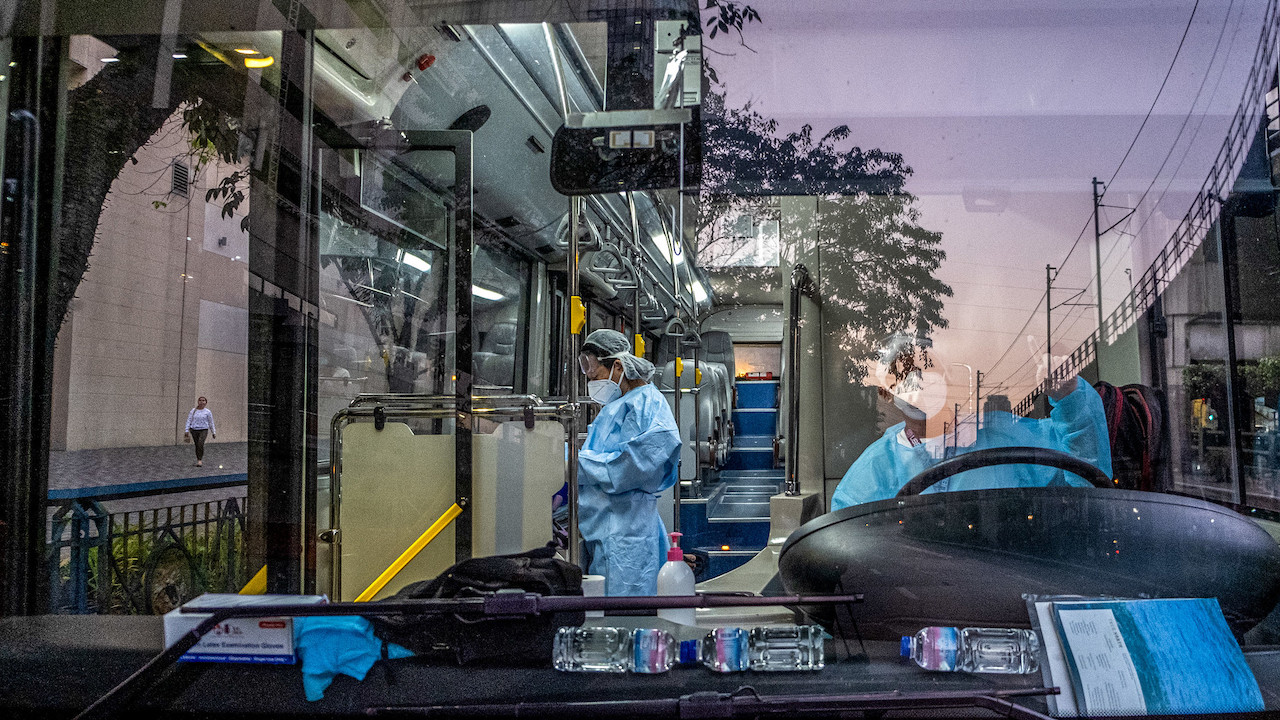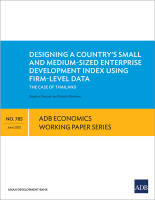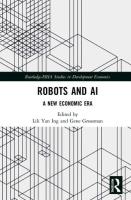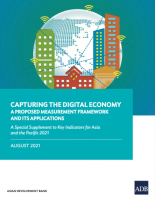
Southeast Asian governments are taking steps to keep new cases down and avoid any more lockdowns which could imperil recovery efforts. Photo credit: ADB.
Investing in green industries, big data, and the digital economy, among other innovations should be in countries’ arsenal.
As the coronavirus disease (COVID-19) pandemic continues to wreak havoc across Southeast Asia and the rest of the world, governments should embrace innovative solutions to address the unprecedented challenges now confronting them, said thought leaders during the recently concluded Southeast Asia Development Symposium (SEADS) organized by the Asian Development Bank (ADB).
There has been a surge in COVID-9 cases across the region due to mutant variants, but governments are taking steps to keep new cases down and avoid any more lockdowns which could imperil recovery efforts.
In the panel discussion, “New Solutions for a Post-COVID-19 World,” ADB Vice-President for Operations 2 Ahmed M. Saeed, Singapore Minister in the Prime Minister’s Office and Second Minister for Finance and National Development Indranee Rajah, Grab Group President Ming Maa, and Morgan Stanley Chief Sustainability Officer Audrey Choi identified some innovative solutions that can pave Southeast Asia’s road to inclusive, sustainable recovery.
1. Invest in industries of tomorrow.
While noting that countries should prioritize COVID-19 vaccinations, being “the single, greatest, most important most urgent priority,” Saeed said they should also focus on a sustainable and equitable recovery that takes into account climate change risks. “We know from this crisis that these tail risks do happen and we have to be ready for the next one and one very large one is climate change. We have to invest in a recovery that's dynamic because it has to be forward-looking as we focus on the industries of tomorrow and not of those from yesterday.”
In policy briefs released during SEADS 2021, ADB advised Southeast Asian countries to invest in green opportunities, including agricultural practices that improve yields while enhancing the health of surrounding natural ecosystems; sustainable management of oceans; sustainable urban development and transport models; circular economy models that can convert by-products and waste-streams across various sectors into valuable end products, and transitioning to clean energy, including the development of renewable energy projects and enhanced energy efficiency across various sectors. Investing in these new sectors can create 30 million jobs in Southeast Asia by 2030.
The briefs also stressed the importance of harnessing big data to deliver essential services more effectively and pressed governments to nurture new sectors—electronics and digital trade—because of their potential for future growth.
2. Help businesses transform and innovate.
Rajah said helping businesses transform and innovate is key to Singapore’s recovery strategy. She said Singapore is committed to emerge from COVID-19 better and stronger. “We do have the technology. We do have the capability. And we are trying to position ourselves to come out of that [pandemic] stronger.”
She said key programs include helping businesses transform and innovate and helping workers to re-skill. It would also involve providing income supplements to those with little education and help them acquire skills to be able to find jobs.
Last year, she said when Singapore was at “critical care” in the wake of COVID-19, the government made sure to preserve jobs by coming out with wage subsidies and relief grants to those in need. The government also helped businesses keep their heads above water through temporary bridging loan programs and loan moratoriums.
3. Mainstream sustainable investing.
Given the existential threat from climate change and the accompanying health, environmental, and social risks, Choi observed that the financial markets and investors have started to realize the importance of sustainable investing. “It’s frankly irresponsible business practices and irresponsible investment practices today to not think about climate risk as a fundamental part of your business continuity.”
Sustainable investing also lifts bottom-lines. She said more forward-looking companies that have made the shift to sustainable investing had seen better returns and ultimately an uptick in their stock prices.
The investor community has also become more savvy about making sure businesses meet sustainability metrics. She cited the work of the Sustainability Accounting Standards Board, a non-profit organization, which developed sustainability accounting standards, making businesses accountable for their sustainability claims.
4. Lean on technology.
While Grab describes itself as a mobile tech firm, over the past year it leaned on technology even more to accommodate changes in consumer behavior due to COVID-19. Maa said Grab is now using artificial intelligence to make sure their riders and delivery partners are wearing masks before they accept rides or make deliveries. This is just one of the measures Grab has adopted to secure the trust of customers on the company’s health measures. “It's a huge amount of work but we’re committed to providing the safest, the cleanest, and most reliable mode of transportation and delivery.”
Grab also found a way to shift Asia’s pasar, or wet markets, into the digital world. In September, Grab launched a digital pasar or wet market service in Malaysia to allow people to buy fresh foods from their favorite pasar. “It’s lower cost. It's more fresh. Over time we're going to digitize as many pasars across the region as we can.”
Technology has also enabled Grab to focus on growing its cashless payments and financial services, he said. “It's just a much safer and more reliable alternative to handling cash and we're doing a lot there whether it’s our micro investment products or insurance products to provide a digital alternative to what's historically been a very different industry.”
He also predicted there would be increased demand for farm-to-table meal options, noting that once that entire supply chain is digitized, moving produce from farm to table will be faster. It will also reduce a lot of the waste that occurs from the multiple layers of logistics and distribution that are in place. “I think every time we digitize another part of the supply chain, then we end up with a greener world in Southeast Asia.”
5. Bolster government finances.
After spending $420 billion to fight the pandemic, Southeast Asian countries are now feeling the pinch when even before the crisis, many failed to meet the minimum tax yield of 15% of gross domestic product required for sustainable development. Many had also seen a drop in tax revenues as the pace of economic activity slowed down due to the pandemic. “One thing that we need to do in order to be able to finance these expenditures is enhance the domestic resource mobilization capacity of governments,” said Saeed. This entails adopting measures to make tax collection more efficient, designing programs that are more progressive, incorporating carbon tax, among others, he said.
To help countries, ADB has set up a regional hub for domestic resource mobilization and international tax cooperation, he added. The hub will promote knowledge sharing and strengthen cooperation on tax policy and tax administration across economies in Asia and the Pacific and their development partners.
In Singapore, Rajah said the government had signaled raising taxes on goods and services and reviewing the carbon tax, also for a possible increase. “I think the key thing is really to focus on growth, because growth is what brings the revenue that augments your corporate income tax, your personal income tax, and it just gets the whole economy going,” she said, noting the digital economy will also be a big part of Singapore’s growth.
6. Mobilize other sources of capital.
With Asia estimated to need $1.7 trillion annually to finance vital infrastructure through 2030, there is a need to mobilize other sources of capital since only half of the requirement is being met, said Saeed.
On average, he said, ADB finances about $20 billion of the region’s infrastructure needs annually. The gap is enormous, he said. “Organizations like ours have really got to enhance our collaborative process with other actors, working with governments, working with the private sector, leveraging the intangible assets of our platforms, the trust we have, the convening authority we have, the technical knowledge we have in project preparation, investing in the standardization of these processes.”
Public–private partnership also has a role to play. Maa cited that in Malaysia, Grab’s digital wallet service is the only non-government-linked digital wallet that the government is using to distribute COVID-19 relief funds. In Thailand, Grab is working with the Ministry of Agriculture to help farmers sell their produce online to help them become more sustainable and earn income. In indonesia, Grab set up drive-through vaccination centers to help the government inoculate 180 million people against COVID-19. “I think a lot of these public–private partnerships can be very, very helpful.”
While the challenges COVID-19 poses may be daunting, collaboration is key. “The challenges that the region confronts, that the world confronts today, are truly of a scale that's daunting in many ways, and that is going to take many, many hands at the till to drive us forward,” said Saeed.


